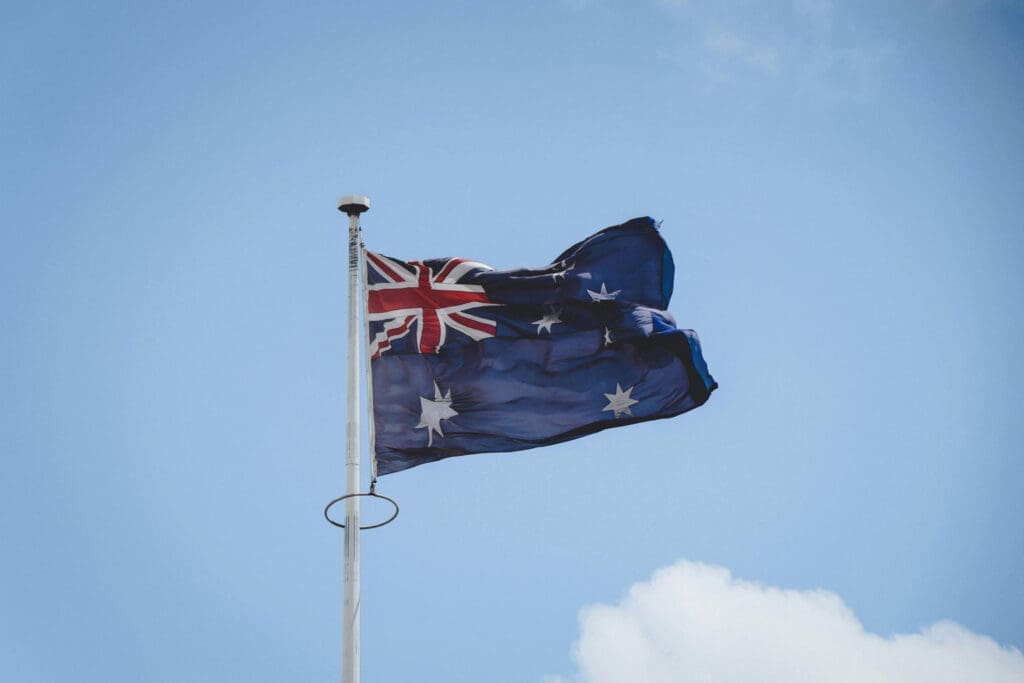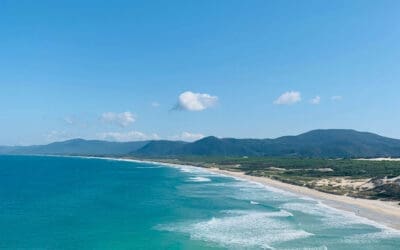The land down under is home to practically every worthwhile experience an adrenaline junkie might want to experience. Find out about just a fraction of the awesome things you can look forward to on your visit and how to make the best of it in our thorough Australia guide for the adventurous traveler.

What Adventures Can You Experience in Australia?
The adrenaline-inducing activities on offer are as diverse as the continent itself.
Exploring the Great Barrier Reef is among the most well-known and worthwhile adventures in all of Australia and certainly in Queensland. If you’re the independent camping type, you might get a bigger kick out of renting a 4WD and touring Frasier Island.
Not afraid of heights? Then abseiling down sandstone cliffs in Victoria’s Blue Mountains is a must. Or, you can take it to the extreme and skydive over Wollongong, landing on one of the beaches there.
You can also skydive in Victoria along the Great Ocean Road or try hang gliding above the forests and vineyards of Mount Dandenong. More down-to-earth adventurers may want to take in the beauty of the Australian Alps while trekking through Alpine National Park or kayaking the whitewater rapids of the Mitta Mitta River.
Speaking of rapids, the Franklin River in Tasmania offers challenges for seasoned rafting enthusiasts. Alternatively, you can put your hiking skills to the test by scaling Cradle Mountain.
Mountain bikers up for a challenge won’t find the twisting trails of South Australia’s Adelaide Hills wanting. Looking for something more sedate yet still thrilling? Then grab a pickaxe and visit Coober Pedy, the world’s opal capital.
Western Australia is the Outback heartland and is rife with desert expeditions. Sandboarding on the Lanceline Dunes is an unforgettable experience, as is rock climbing Kalbarri National Park’s striking red gorges.
Hikers will find the Northern Territory rife with opportunity, from the Rim Walk in King’s Canyon to the Base Walk around the famed Uluru / Ayers Rock and the challenging Valley of the Winds trek in Uluru-Kata Tjuta National Park.
You don’t have to give up the comforts of city life to get your fix, either. Sydney offers the famous 3,800-foot-high Harbour Bridge climb. The Story Bridge in Brisbane offers a similar experience. Plus, you get to abseil down if you wish. If you’re in Darwin, you won’t want to miss the opportunity to dive alongside giant crocodiles inside the Cage of Death.
When Should You Visit Australia?

This depends highly on the type of activities you’re interested in and the parts of the country you plan to visit. December and January are peak summer months that attract the most tourists, so you might want to consider the shoulder seasons if you aren’t keen on crowds.
For the south of Australia, that means September through November in spring and March through May in autumn. May through October is the best time to pay Queensland and the northern coast a visit since the dry season’s milder climes are perfect for outdoor activities. That’s also when you’ll have the most comfortable Outback experience since temperatures are milder and the wildlife is more active.
Permit and License Considerations
Many of the exciting activities listed above require permits. These prevent overcrowding and ensure participants are aware of guidelines relevant to safety, environmental, and cultural preservation.
It’s best to obtain permits in advance to avoid unpleasant surprises. If you’re visiting national parks, you’ll also want to do the same, either for the specific park or the state you’re in for convenience’s sake.
You’ll need to be licensed to participate in some of the more extreme activities. For example, solo skydivers need to be certified, as do divers who use scuba gear. Make sure to either get your certs in order before departure or choose activities operated by certified professionals.
Transportation
Australia is huge. You might not be able to visualize its scope until you get there, but you can inform yourself beforehand and plan accordingly. For example, don’t expect to cram activities in Tasmania and the Northern Territory into a week-long vacation without flying from one to the next.
Cities have developed effective public transportation networks. However, the more rural and further in you go, the less reliable the routes and roads become. Reaching the most rugged places requires using four-wheel drive vehicles, so brush up on your driving skills.
There’s also the matter of accessibility. Some roads in indigenous lands are off-limits or require permits to traverse. Inquire about and obtain necessary permits beforehand.
Communication Challenges
Leaving civilization behind might be a good idea. The ability to reach out for help even from the middle of nowhere – not so much. As in any first-world country, coverage through Wi-Fi and local networks is more than adequate in cities. Things get dicey when you’re in remote areas.
Even so, an eSIM for Australia should serve your needs throughout most of the country. An eSIM chip is already embedded in your smartphone and can replace a physical SIM card without needing to swap anything out or expose the phone to dust or water.
Choose an eSIM provider that partners with Telstra, since that’s the Australian operator that offers services to far-flung areas, including the Outback. Ensure that the eSIM provider offers reasonable rates and enjoys customer trust.
Cell tower coverage is sparse or non-existent in large parts of the Outback, especially in much of Western Australia. Consider bringing a satellite phone or GPS messenger if traveling there.
Ecological and Cultural Considerations
The responsible traveler leaves the place they visit untouched or in a better state than it was. That means you should pick up after yourself, minimize the use of disposable plastic, and buy from local businesses focused on sustainability.
Sites like Uluru hold deep spiritual significance for local indigenous peoples. Before visiting, it’s advisable to read up on accepted behaviors and practices. Also, don’t hesitate to respectfully talk to locals about their culture or seek out experiences supported and curated by them.
Read Next
Couple’s Vacation Guide to O’ahu, Hawai’i
The Perfect One Week in Bali Itinerary for First-Time Visitors
Ultimate Nias Indonesia Surf and Travel Guide
Top 5 Beaches in Florianopolis, Brasil
Pedra do Telegrafo Hike, Rio de Janeiro: All You Need to Know
Rio de Janeiro vs Florianopolis: Which Brazilian City is Better?
Visit Macau: Las Vegas of the East
Travel to Puerto Escondido, Mexico with Me!











